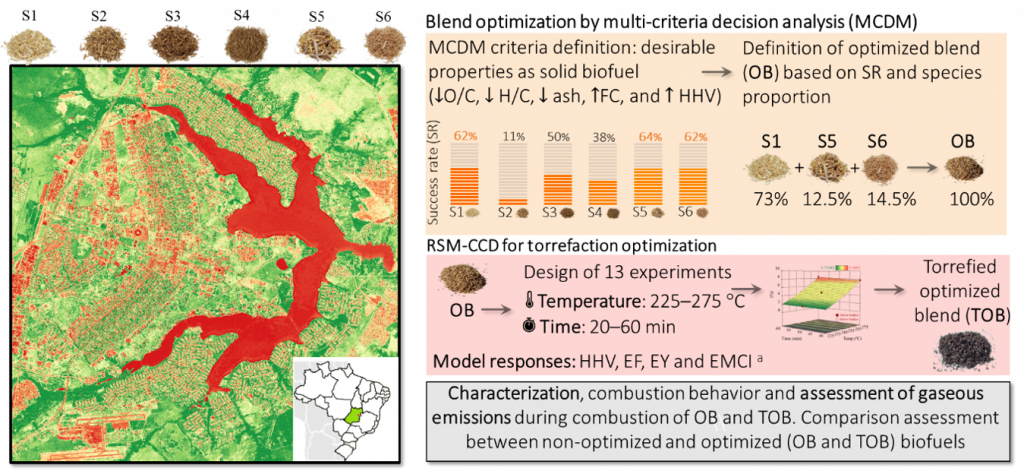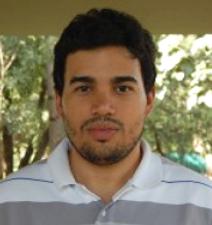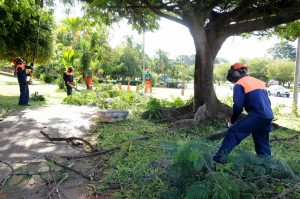The bottleneck of urban forest waste (UFW) as biofuel relies on surpassing its logistical management, feedstock quantity and supply, heterogeneity, and property drawbacks. This article proposes a hybrid approach based on multicriteria decision methods (MCDM) and response surface methodology (RSM) to optimize the definition of UFW blends and their torrefaction (temperature and process time). First, proximate, ultimate, and calorific analysis of UFWs (S1.Mangifera indica, S2.Ficus benjamina, S3.Pelthophorum dubium, S4.Persea americana, S5.Anadenanthera colubrina, and S6.Tapirira guianensis) were assessed. Then, understanding that UFW relies on species that do not always show promising characteristics as biofuels, the MCDM was applied to feedstock properties defining an optimum blend (OB) composed of 73%, 12.5%, and 14.5% of S1, S5, and S6, respectively. Next, the OB torrefaction was optimized using a central composite design (RSM-CCD), providing prediction models, the optimum torrefaction condition (273.3 °C and 40 min), and a torrefied optimum blend (TOB). Finally, the approach was validated by assessing TOB’s properties, combustion behavior, and gaseous emissions. The methodology supplied a TOB with lower ash (2.67%), an HHV of 20.87 MJ kg−1, reduced nitrogen content (up to 39.65%), and more stable combustion resulting in a superior solid biofuel with a lower potential of NO-emissions in further applications.








